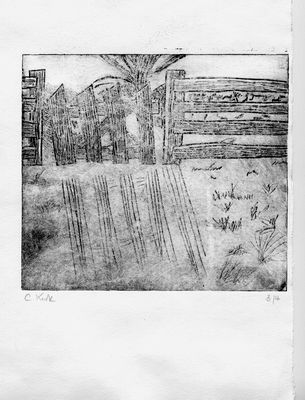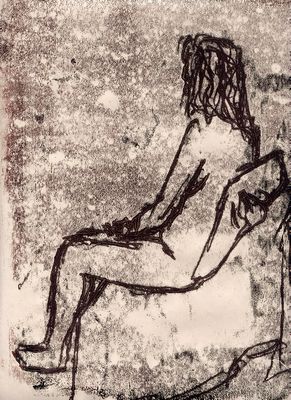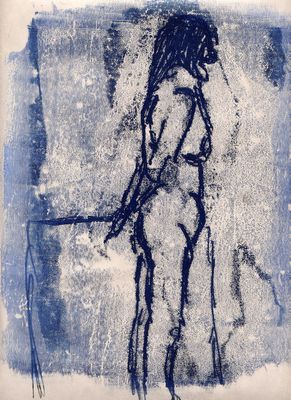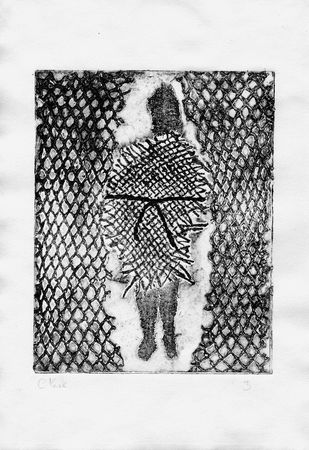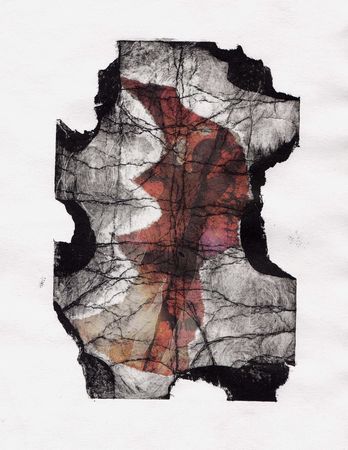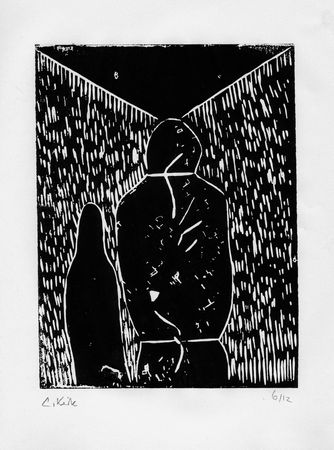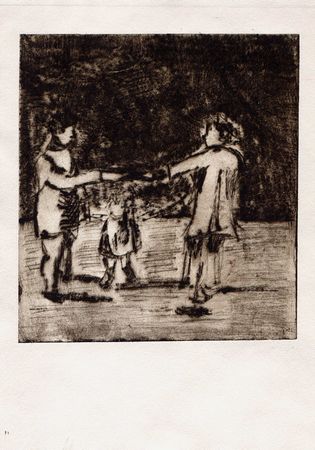
I’m taking advantage of the half-term break to catch up with myself. This is one of a series of drypoint etchings based on my sketches from childhood photographs. I’ve used sepia ink because of its ability to instantly make something look old. I love this colour ink. I have a lot still to learn about drypoint – the first lesson being to take more ink off on the first printing so that I can see the marks clearly. (Although I do quite like the sense of atmosphere created by the ink left on the plate.)
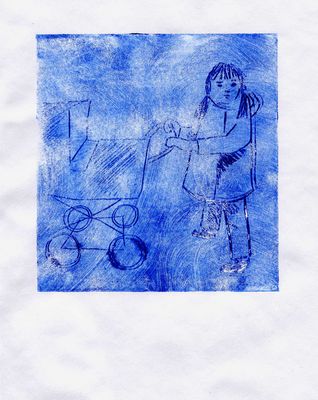 I am experimenting with some techniques for printmaking at home, using inexpensive materials. This image was produced using intaglio print card to create a drypoint etching plate. I scratched the design into it using a bradawl and small screwdriver. I then inked it up using Artisan (water miscible) oil paint, wiping the excess off with torn pages of a telephone directory. To test it out, I dampened ordinary cheap cartridge paper, blotted it on newspaper, and laid it over the inked up plate. I then ‘pressed’ it using an ordinary rolling pin! It’s not perfect, but it is a start, and I plan to keep experimenting. I’ve made some cream handmade paper, and I plan to try using this for printing.
I am experimenting with some techniques for printmaking at home, using inexpensive materials. This image was produced using intaglio print card to create a drypoint etching plate. I scratched the design into it using a bradawl and small screwdriver. I then inked it up using Artisan (water miscible) oil paint, wiping the excess off with torn pages of a telephone directory. To test it out, I dampened ordinary cheap cartridge paper, blotted it on newspaper, and laid it over the inked up plate. I then ‘pressed’ it using an ordinary rolling pin! It’s not perfect, but it is a start, and I plan to keep experimenting. I’ve made some cream handmade paper, and I plan to try using this for printing.